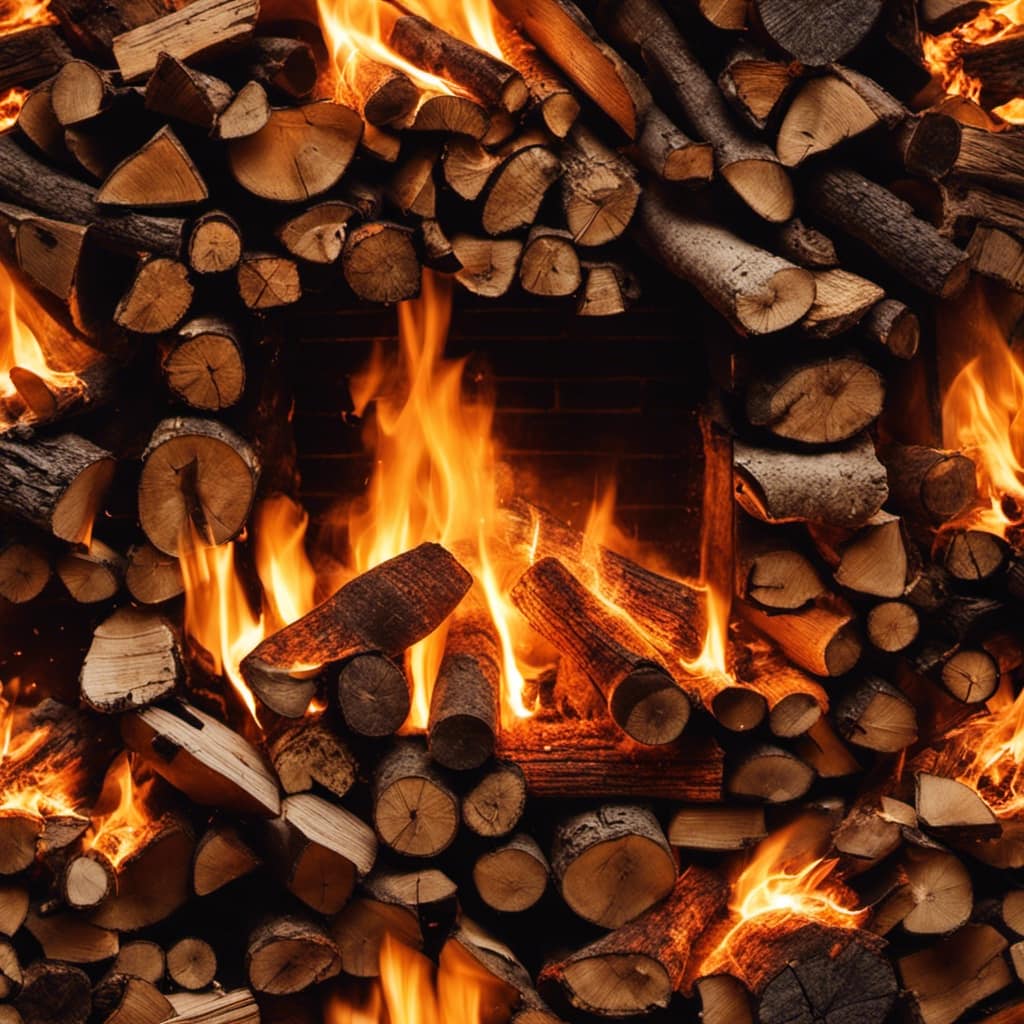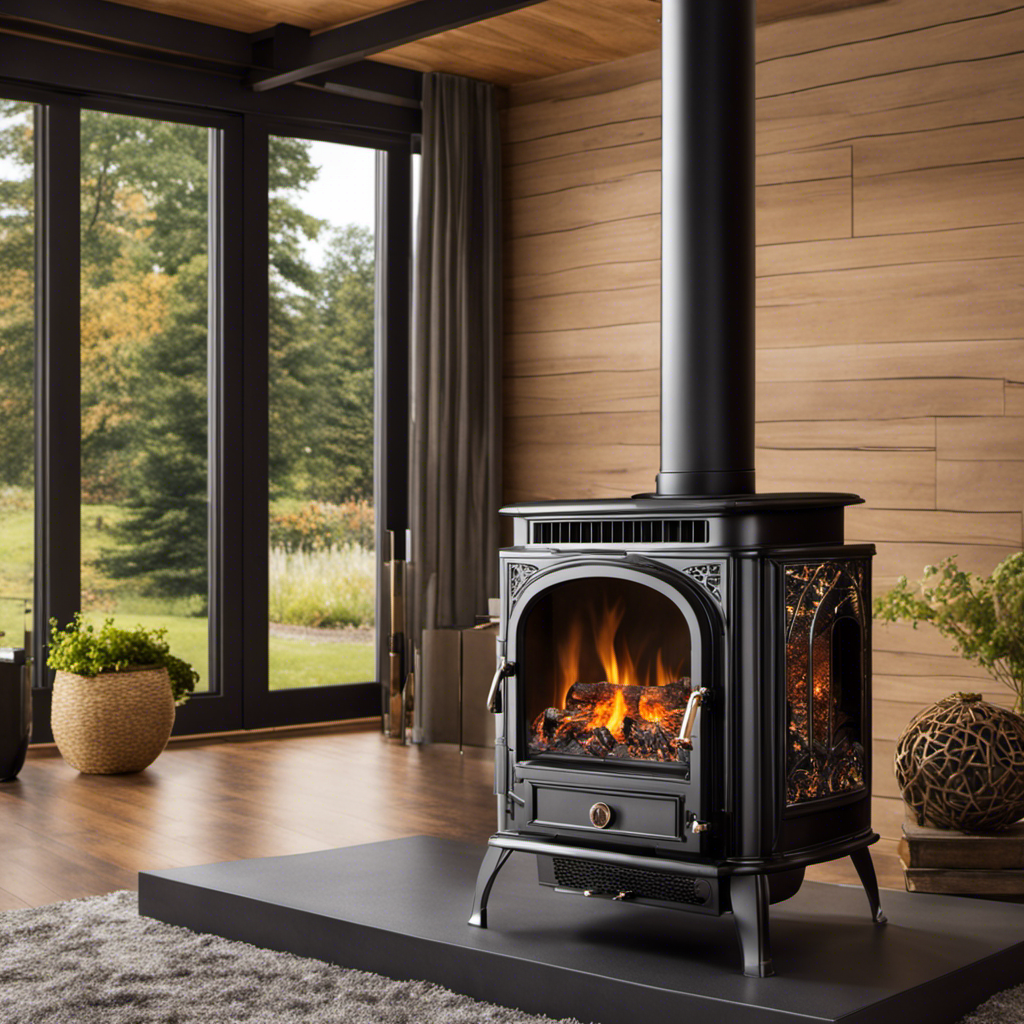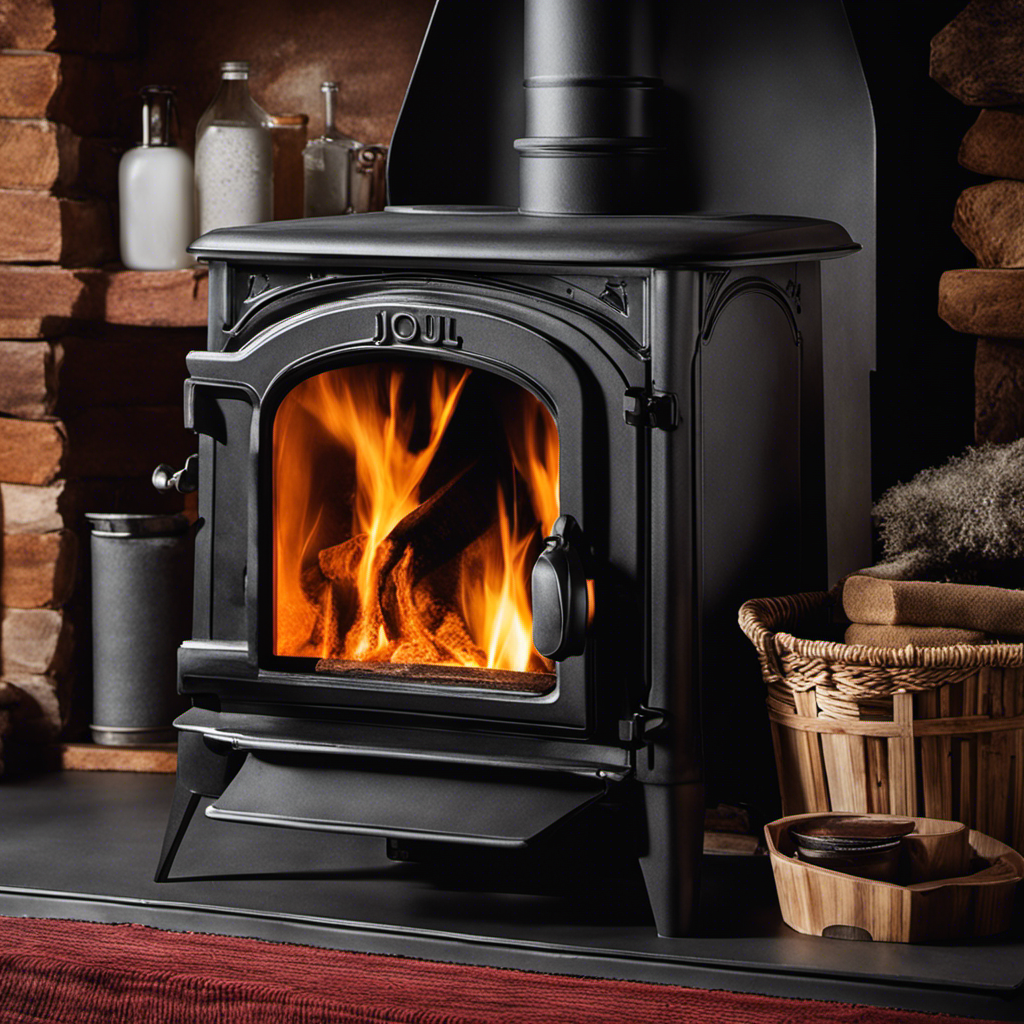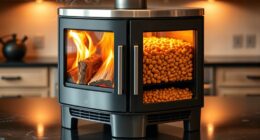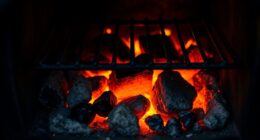Have you ever thought about the necessary distance needed between a wall and a freestanding wood stove?
In this article, I’ll provide you with the answers you’re looking for. We’ll delve into the specifics of national building codes and regulations, minimum clearance requirements, and the factors that affect the distance needed between your wood stove and the wall.
Additionally, we’ll explore heat shield options and installation techniques, along with some valuable tips to ensure the safe placement of your wood stove.
Key Takeaways
- Fireproof materials are required for the walls surrounding the wood stove to prevent fire hazards.
- Local building codes specify the minimum distance between a wood stove and combustible walls.
- Proper ventilation is crucial for safe operation and compliance with building codes.
- Heat shields made from heat-resistant materials can reduce required clearance and improve safety and efficiency.
National Building Codes and Regulations
I need to make sure I comply with the national building codes and regulations when installing my free-standing wood stove. One of the key requirements is the use of fireproof materials. The materials used for the walls surrounding the stove should be non-combustible to prevent any fire hazards. This ensures that the stove is safely installed and reduces the risk of accidental fires.
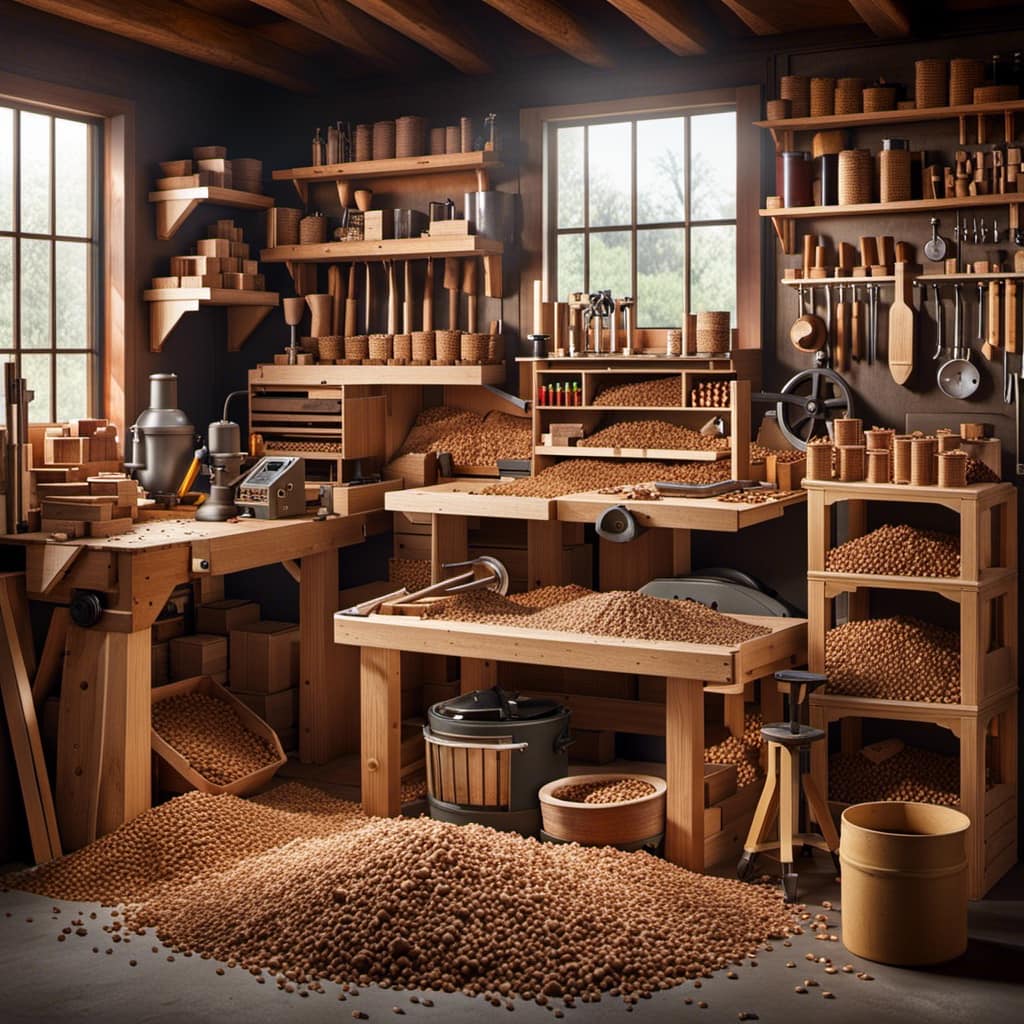
Additionally, proper ventilation is crucial for the safe operation of the wood stove. The building codes specify the minimum ventilation requirements to ensure proper airflow and prevent the buildup of harmful gases. This includes having an adequate supply of fresh air and proper exhaust ventilation.
Minimum Clearance Requirements
How much clearance is required between the wood stove and the surrounding walls, and can it be reduced if fireproof materials are used?
This is a common question when it comes to fire safety precautions and proper ventilation. The clearance requirements for a wood stove are determined by building codes and regulations, which aim to minimize the risk of fire and ensure proper airflow.
Here are the key points to consider:
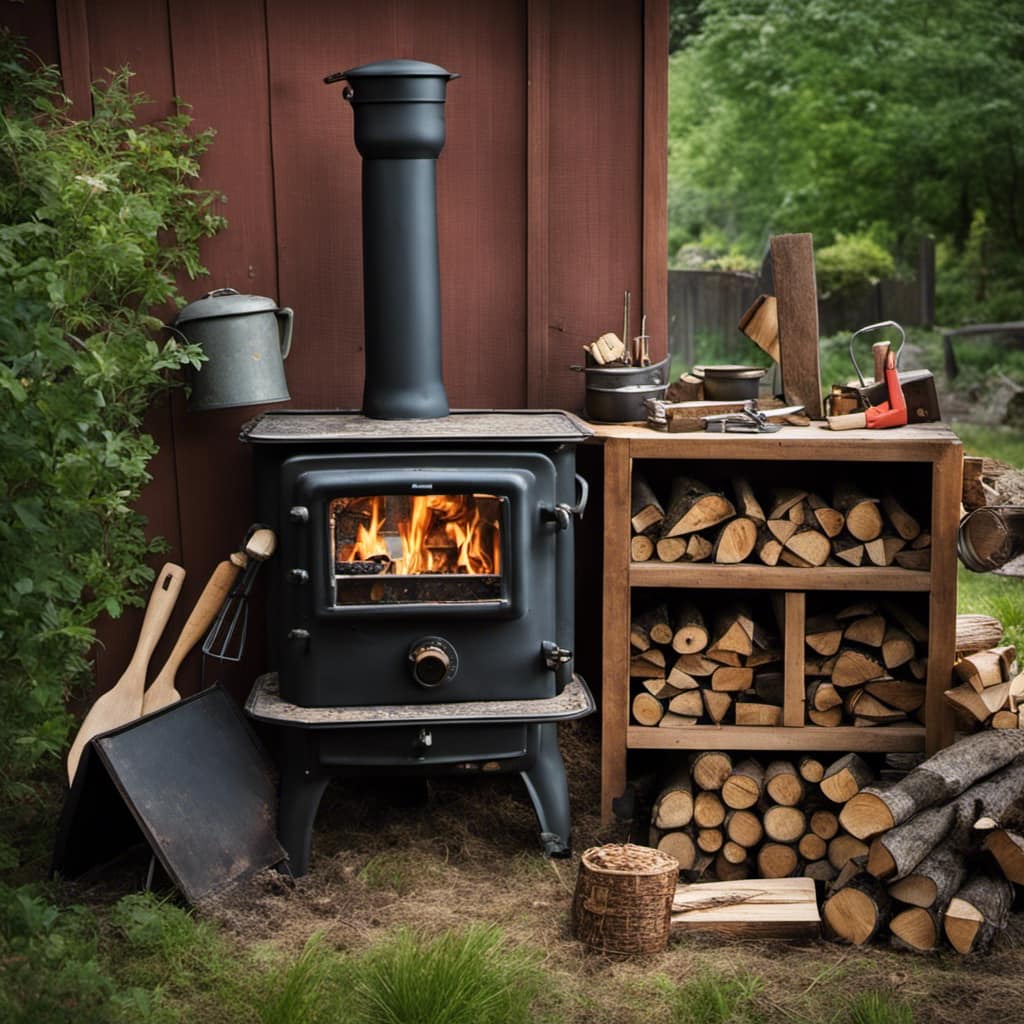
- The minimum clearance distance between a wood stove and combustible walls is typically specified by local building codes.
- This clearance requirement is necessary to prevent the walls from overheating and catching fire.
- Fireproof materials, such as non-combustible insulation or heat shields, can be used to reduce the clearance distance.
- However, any reduction in clearance must still comply with the minimum requirements set by the building codes.
- Proper ventilation is crucial to maintain a safe and efficient wood stove operation.
Factors Affecting Clearance Distance
The factors that affect the clearance distance between a wood stove and surrounding walls are important to consider for fire safety. When determining the appropriate clearance distance, safety considerations and ventilation requirements must be taken into account.
Safety considerations include the risk of combustible materials catching fire and the potential for heat damage to nearby structures. It’s crucial to maintain an adequate gap between the wood stove and walls to prevent accidental fires and ensure the safety of occupants.
Additionally, ventilation requirements play a significant role in determining the clearance distance. Proper airflow around the wood stove is essential for efficient combustion and to prevent the buildup of hazardous gases, such as carbon monoxide. Adequate clearance allows for proper ventilation and reduces the risk of carbon monoxide poisoning.
Therefore, careful consideration of these factors is essential in determining the appropriate clearance distance for a wood stove.
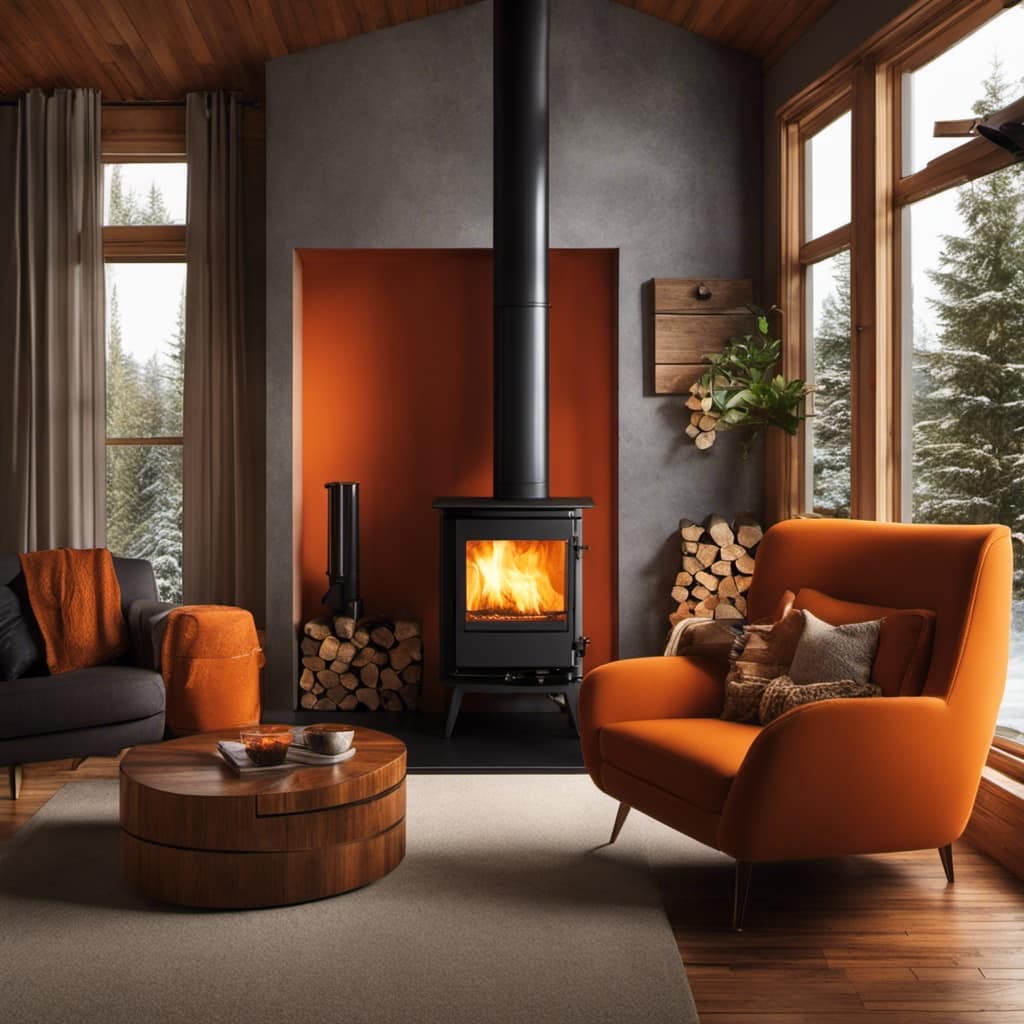
Heat Shield Options and Installation
Considering the benefits of heat shield options and their proper installation can greatly enhance the safety and efficiency of a wood stove. Heat shield options, made from heat resistant materials, provide an added layer of protection between the wood stove and combustible materials. They help to reduce the required clearance distance, allowing for more flexibility in stove placement.
When installing a heat shield, it’s important to ensure proper ventilation behind the shield to allow for the dissipation of heat. This can be achieved by creating an air gap between the shield and the wall, using spacers or standoffs.
Additionally, it’s crucial to use heat resistant materials for the shield, such as fire-resistant gypsum board or sheet metal, to withstand the high temperatures emitted by the wood stove.
Proper installation of a heat shield, combined with proper ventilation, can significantly improve the safety and efficiency of a wood stove.
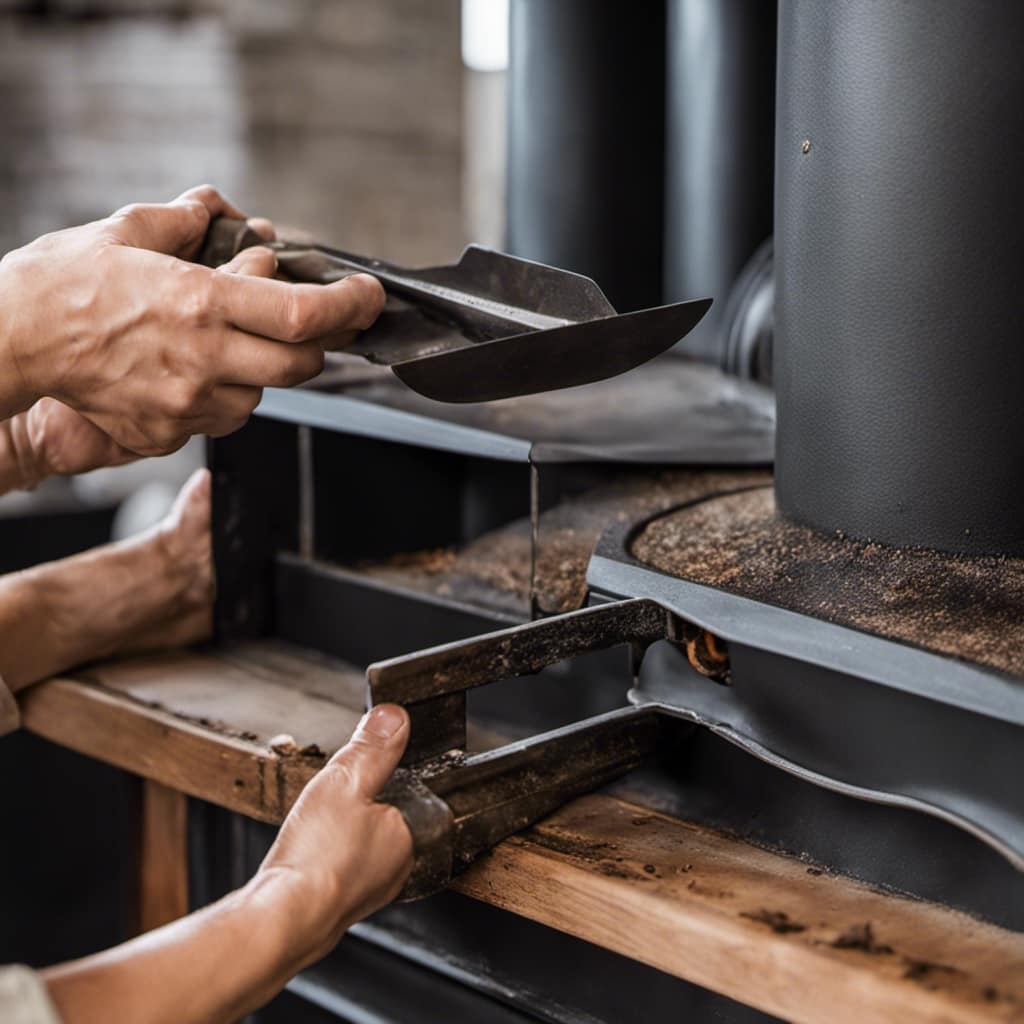
Tips for Ensuring Safe Wood Stove Placement
I’ve learned some valuable tips on ensuring safe placement of a wood stove, like maintaining proper clearance distances from walls and other combustible materials. This is crucial to prevent potential fire hazards and to ensure proper ventilation.
To further enhance the understanding of safe wood stove placement, I have prepared a table below outlining the recommended clearance distances for different types of walls and combustible materials:
| Material Type | Clearance Distance |
|---|---|
| Non-combustible Wall | 12 inches |
| Combustible Wall | 36 inches |
| Combustible Material | 36 inches |
In addition to clearance distances, it is important to consider proper ventilation. A wood stove should always be connected to a properly installed chimney system, ensuring the safe removal of combustion byproducts.
Furthermore, the choice of flooring type should be taken into account. It is recommended to have a non-combustible flooring material, such as tile or concrete, around the wood stove area to prevent potential fire hazards.

Frequently Asked Questions
What Are the Potential Risks or Dangers of Placing a Free-Standing Wood Stove Too Close to a Wall?
Placing a free-standing wood stove too close to a wall can pose significant risks and dangers. The heat generated by the stove can ignite nearby flammable materials, leading to fires and property damage.
Are There Any Specific Requirements for the Type of Wall Material or Construction That Should Be Considered When Determining the Clearance Distance for a Wood Stove?
When determining the clearance distance for a wood stove, it is important to consider the specific requirements for the wall material and construction. Certain types of walls may require additional precautions to ensure safety.
Are There Any Additional Safety Measures or Precautions That Should Be Taken When Installing a Wood Stove in a Multi-Story Building or Apartment?
When installing a wood stove in a multi-story building or apartment, it’s crucial to follow additional safety measures. Proper ventilation requirements must be met to ensure the safety and well-being of occupants.
Can a Wood Stove Be Installed in a Corner or Alcove, or Does It Need to Be Placed in an Open Area of the Room?
When considering corner installation or alcove placement for a wood stove, it is important to ensure proper clearances and ventilation. Consult local building codes and manufacturer guidelines for specific requirements to ensure a safe and efficient installation.
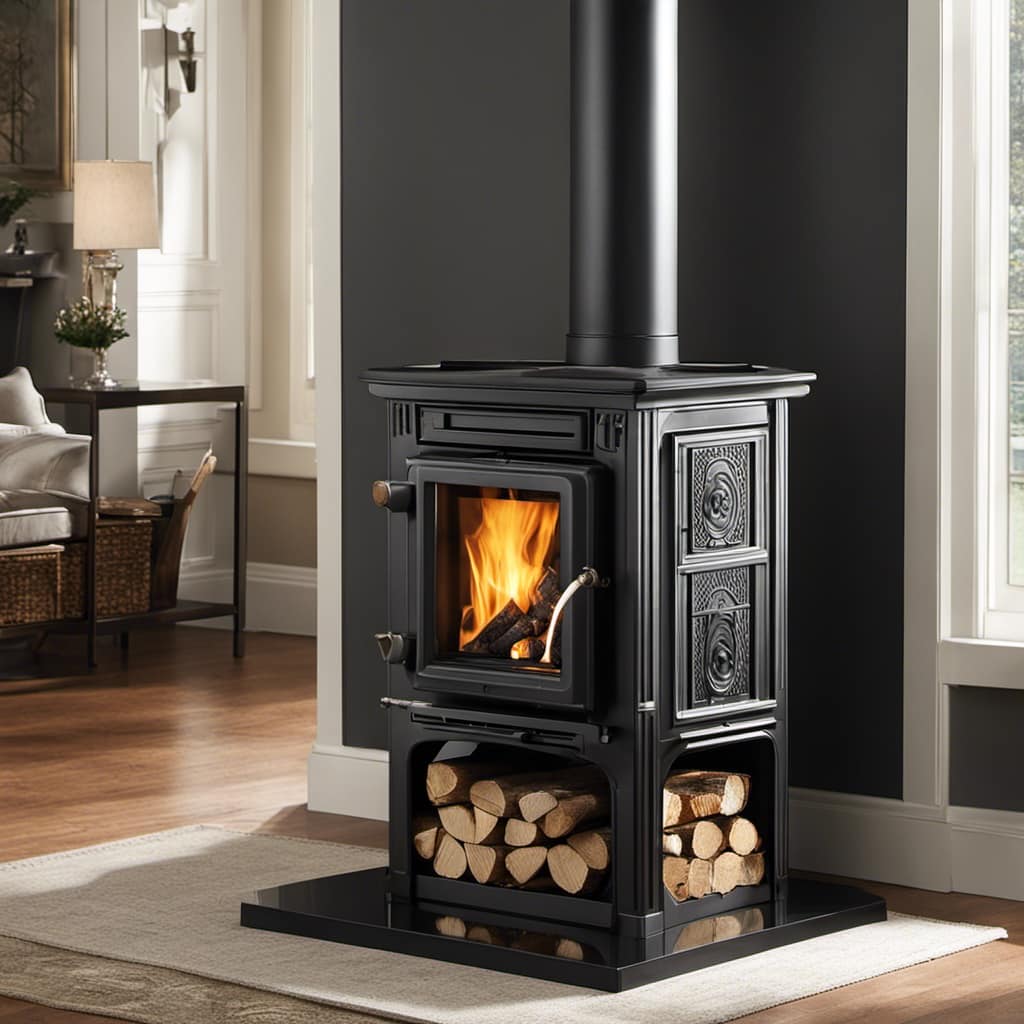
How Does the Size or Output of the Wood Stove Affect the Required Clearance Distance From the Wall?
The size and output of a wood stove can affect the required clearance distance from the wall. A larger stove may require a greater distance to ensure proper ventilation and prevent overheating. Efficiency also plays a role in determining the necessary clearance.
What Are the Clearances Required for the US Stove Wood Stove #2000 from the Back Wall?
The wood stove back wall distance for the US Stove Wood Stove #2000 should be at least 36 inches. This clearance is required to reduce the risk of overheating and potential fire hazards. It is important to follow the manufacturer’s recommendations to ensure safe and efficient operation of the wood stove.
Conclusion
In conclusion, when it comes to the placement of a free standing wood stove, it’s essential to adhere to the minimum clearance requirements set by national building codes and regulations.
Factors such as the type of stove, size of the room, and proximity to combustible materials should also be taken into consideration.
Installing a heat shield can help reduce clearance distances, ensuring a safe and efficient wood stove setup.
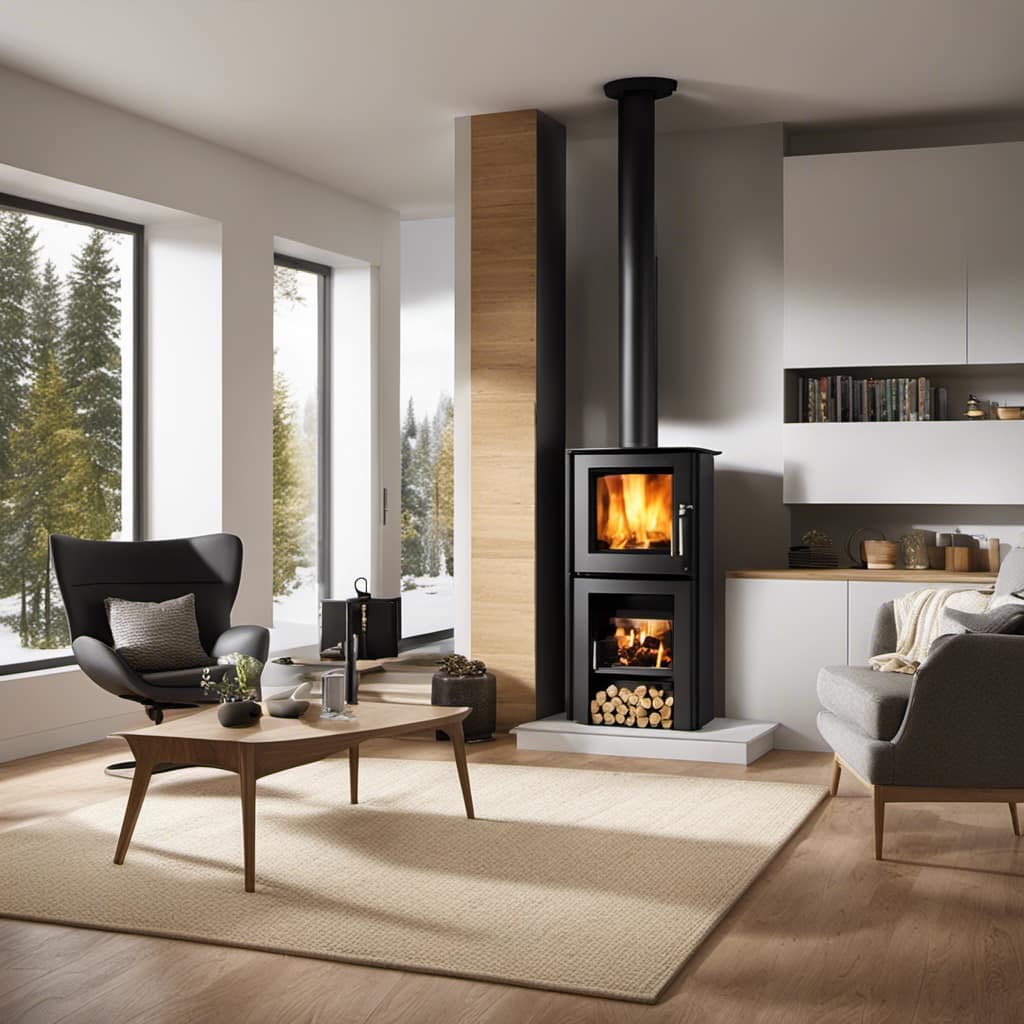
Remember to always prioritize safety when positioning your wood stove.
Growing up surrounded by the vast beauty of nature, Sierra was always drawn to the call of the wild. While others sought the comfort of the familiar, she ventured out, embracing the unpredictable and finding stories in the heartbeat of nature.
At the epicenter of every remarkable venture lies a dynamic team—a fusion of diverse talents, visions, and passions. The essence of Best Small Wood Stoves is crafted and refined by such a trio: Sierra, Logan, and Terra. Their collective expertise has transformed the platform into a leading authority on small wood stoves, radiating warmth and knowledge in equal measure.




